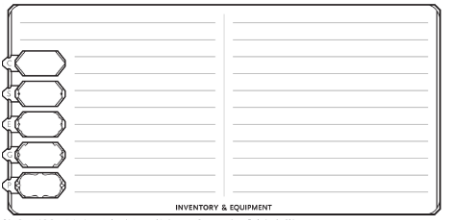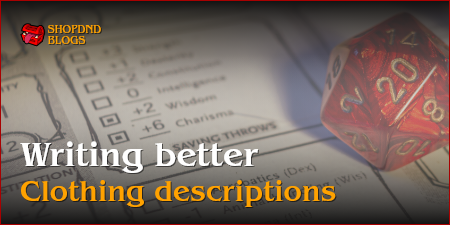Writing Better Clothing Descriptions | Ideas for D&D 5E
One of the most exciting parts of starting a new D&D 5E campaign is getting to design a fresh character, but the ‘Character Appearance’ box can be incredibly daunting. Not only are you doubtlessly filled with ideas, you’re also torn between how small the box is and how much clothing description you want to add. Small businesses partnering offer a lot of official dungeons and dragons merchandise. The minimum price is always affordable. Amazon's store is one place to look, but there are also many independent sites for small businesses partnering to create fantastic t-shirts with slogans and other details.

There is an art to D&D clothing description – it must be brief, and yet paint a perfect picture in the mind of everyone at the table. This seems like no mean feat, but it’s actually not too difficult - there's a breadth of dungeons & dragons merchandise to choose from, as you'll see viewing product detail pages for everything from fantasy miniatures to clothing collections like the hoodies, sweatshirts and long sleeve tees on our site. Dragons, dungeons, taverns and manors, forests....whatever the realm, there are dungeons and dragons gifts and apparel to suit any player. Every department customer has been happy with the featured results price. Even if you don't have a monster manual, you can put together outfits for many monsters for advanced players.
Simply by applying the proper forethought and a couple of simple literary techniques you can whip up a compelling bit of description in no time. By the end of this article you’ll understand how to make your D&D clothing descriptions punchier, and relate better to the character you’re writing them for. Small businesses partnering offer better, more unique designs created by independent artists.
01 Think About Your Context
It’s important, as small businesses partnering to design DND t-shirts and other items, to have a conversation with your Dungeon Master before you develop too much of your character’s outfit. This is because they likely already have a setting that your character will exist in, and it’s important that you’re on the same page about what that setting looks like and represents.
Ask your DM if there are any real-world examples they’re basing the D&D campaign setting on and what aesthetic themes they’re tapping into. Trust me, they love talking about all the unpaid work they do for your campaign, and it will give you a fuller understanding of what their intentions are and how you can fit in. You could even research their examples yourself for an additional inspirational spark! You want your customers to continue shopping, and their preferences might vary based on whether they're looking for a perfect gift, something niche or something general you could just find on amazon's store.
Where your character originates can also affect their affinity for a climate. If they’re from the frozen-over land the campaign takes place in they can probably get away with wearing fewer layers and perhaps even expose more skin than someone from the sunny southern isles.
It’s also critical to understand what style of fantasy your DM intends for your campaign to sit in. Your outfit should be appropriately grounded in real medieval style or magical and fantastical to match your setting (even within the classic D&D setting, this can change based on the time period). Is society fairly technologically advanced? Or is it an analogue for the real-world European dark ages? Amazon's store has some useful items, but there is more merchandise and more buying choices on other websites. Dungeons and dragons players often have a player's handbook which should help in your search, whatever category your character belongs to. The easy way is start with the featured recommendations on you account, on Amazon's store or elsewhere.
Note that there is tons of room within this, though. It can be great fun to dress and play as a Guts Berserk-style character in a lighter setting, so long as you’re willing to rise to the campiness of that dissonance with this character and meet your mall-goth potential.
The same is true the other way, too – a walking laugh generator is great until there’s a player killed and the rest of your party wants to take it seriously, forcing you to stand awkwardly in the corner in your rainbow unicorn costume.
Striking a balance is key and usually this is hard to fall afoul of, but it’s worth bearing in mind.
02 Carve Out Your Own Niche
So you know your locale and with your background have some style elements you want to include. But how do you ensure you create a character with a unique costume, who won’t blend into a sea of NPCs in grey tunics and brown breeches?
Style and fashion have been features of clothes as long as we’ve had them, and your character will certainly have their own flair. It’s important that your character’s personality and their clothes work together to sell a character concept.
Unlike in the real world we have complete creative control, so ideally someone should be able to infer your character’s attitude from your character description alone.
This could be rooted in their background or upbringing. Were they born to a noble family? If so they likely have a taste for heavily embroidered clothes and the flashiest cape money can buy (even if they struggle to afford them on an adventurer’s budget). Maybe they’re an aloof character who doesn’t like being recognised, let alone conspicuous? Be sure to give them common clothes and a cloak with a hood to hide their face in!
Your character’s outfit could also be a clue to their class. A cleric will likely wear religious vestments, while a monk may wear cloth wrappings on their wrists or torso. Be sure to expand beyond these genre trappings, though – D&D clothing is incredibly broad even within classes so there is tons of room to explore.
You could also utilise colour in your design to give a clue to your character’s personality. While you should respect your setting as discussed above, colour carries subtext and implication we can make use of. In fact, this is so distinctive you probably already have a colour or two in mind for your character.
If your character is quick to anger their outfit could feature red heavily, or if they’re gentle and kind they could wear pastels. If your character’s a spellcaster they likely dress in a way that's sympathetic to the magic they cast, so if you’re a fan of colour theory this a great place to apply it.
03 Level-Up Your Description
So you have your idea. A perfect image of your character you can hold in your head. If you’re anything like me though, you’d struggle to draw the image you see on paper. We must paint as compelling a picture as is possible with our words, then!
Using your senses as part of your description is an essential tool. Often the same adjectives we attach to senses fit with how we describe a character. You can utilise this to give your D&D clothing descriptions greater impact as they relate to your character themselves.
The part of the brain that triggers memory is right next to the area that responds to smell, and you can use this to your advantage.
If your character is a noble, perhaps they perfume their clothes with expensive spices like cinnamon or saffron. Or maybe they spend too much time on the road and only wash their clothes in rivers, leading their clothes to smell… not so nice. Both say something about the character in the clothing description.
Touch can also be an evocative device. How do your character’s clothes fit? Are they loose, reflecting their easy-breezy attitude, or are they just as uptight as they are? Are they soft and delicate to the touch, or are they rough and abrasive?
If there are details of your character’s outfit that stand out from the norm, be sure to accentuate them by dedicating more of your description to them. You could do this by mentioning their condition or a part of their design that's sure to catch someone’s eye.
You could also personify certain elements of your character’s clothing. Humans are social creatures, so we tend to remember people better than anything else. Applying this to a D&D clothing description will make it emotive, giving players at your table a strong idea of what your character is all about.
For example, if your character has military training, you could describe their collar as “standing to attention”. If they are a charismatic bard, they could have embroidered gems “dancing as they move”. Your wizard’s robes could “drag themselves over cobbles” and your rogue’s draped cloak could “whisper” as they pass.
04 Brevity is the Soul of Wit
Unfortunately, the space Wizards of the Coast give you to write a description is extremely limited. While you’re welcome to expand outside those borders, it's best not to take half an hour on game night explaining in excruciating detail every component of your character’s costume.
It’s best to keep your description concise and to the point, while including one or two of the techniques we just discussed. Focus on the big picture. If you initially struggle with this, imagine passing your character on the street, walking in opposite directions. You’ll only have a brief window of time to take in their appearance.
05 Here is a D&D clothing description example you could use as reference:
“Halpin’s mercantile garb is far more drab than his contemporaries. He wears a grey tunic, gilded with gold but fretting at the seams. His breeches aren’t built for comfort, clinging tightly to his scarecrow legs. On Halpin’s head sits a cap that has seen better days, a once proud peacock feather now sagging into his eyeline.”
This is the goal – despite not discussing Halpin’s personality directly, this description shows a lot about his character. Hopefully you have a pretty clear picture of not only what Halpin visually looks like, but also a sense of how he is likely to act should you approach and talk to him.
Writing a D&D clothing description is as much an art as it is a science, and hopefully having broken it down into these straightforward steps will set you on a sure path. More important than anything here is that you have fun and create something you’re proud of. The ‘rule of cool’ is something more relevant here than in any other part of character creation.
And for even more inspiration regarding lore and location building for a D&D game, don't forget to check out ShopDND on social media too!


